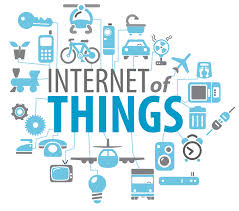An interesting article came out end of August that looked at some “gadgets” that should have just stayed dumb. A good read that highlights some everyday items that probably should have stayed out of the IoT spot light. Click here for the article.
But are we missing the bigger picture with IoT? I agree with Christopher Mims from the Wall Street Journal about the over smartening of banal items – plates, pans, drinking cup to name a few. Click here for the piece. Not every object in our every day lives need to be connected. However, as prices come down, use cases for some of these gadgets might become more appealing. Let’s look at some that @internetofshit called out:
- The connected bottle of wine – yes tracking my $5 bottle of wine is a little silly. But think about the importance of track and trace for items such as your cough syrup or baby formula. Ensuring they have not been tampered with or counterfeited. How about monitoring perishables such dairy. From a distributor stand point, being able to track and trace a bottle of Coke or Pepsi could have long reaching impacts on the supply chain, being much more precise with regards to stocking and inventory management. Read a recent case study I wrote about how Free Flow Wines tracks their time/temp sensitive inventory.
- Smart water fountain for pets – do you really need to monitor your pets’ water intake? Probably not. But having access to controlling the dispensing of water and food? There are already plenty of products on the market that have timers to dispense these items. Why not make that smarter? The pet business is a $55b + annual market in the United States alone, with over 3% growth annually. Providing customers with a smart pet food/water dispenser where the pets’ intake could offer an alternative for those who are not always home but still want to ensure their loved pets get the necessary food and water. Consumers spend money on their pets, as if they were their children. In many ways they are. That $55b market doesn’t seem too silly, that seems like real money.
- Connected socks – Wow, $199 socks…yikes. Even someone like me who loves their socks (just check my instagram page – @gcourtin – for my sock selection) that is a high price tag. But let’s imagine that price tag comes down. At $20 – $50 consumers might start purchasing these items. Why? Companies like Adidas are already putting connected devices in their soccer boots to provide players and coaches with a large amount of data to craft better training regimes. Think it is silly? Click here to read a great piece on how the German national soccer team used this to win the World Cup. Runners, soccer players, basketball players, football teams and the list goes on, of athletes that could gravitate to this type of performance data. Granted this might already become available via the shoes, but if the socks are less expensive they might get to that market first.
- Smart jars and water bottles – These could fall under the connected kitchen/home category. Do I need to know exactly how much water I drink a day? Or exactly what the nutrition content of the items in my jars? It might sound like a little overkill. What about a use case of tying in your water intake with your Fitbit or Apple Watch or smart phone? Does anyone not believe that personal health tracking devices are not firmly entrenched? Extending this into our consumption does not seem like a big stretch. The smart jar might one day be connected to a larger food supply chain. Large CPG companies such as P&G and Unilever are always interested in getting better data on the actual usage of their products. Even players such as Amazon and Google might want to find a way to have customers use these smart containers so they can better replenish items at the home.
I agree that sometimes these devices appear to be technology looking for a problem to solve. But with some aspects of IoT it might be just that at some level. We are still in the early stages of IoT. And with that there remains many skeptics, issues that still need resolution (privacy and security being two of them) and at times too many things being made “smart” for the sake of it. What we need to focus on is not the devices and gadgets that are being connected, rather the use cases that these connected devices might open up.
Now where are my connected socks?



